BnF Ms. Fr. 640
One particularly relevant section of our manuscript would appear to be the section titled "mouler fruicts en sucre et animaulx," which relates to sugar casting fruits and animals. (I credit the individual with the CUSID "mrp2162" for bringing attention to this citation in the Bread Molds section of our WikiSpace.) I found a number of things especially interesting:1. ORDER: this recipe begins with the description of how to prepare the plaster cast in which to put liquid sugar, and only then does it explain how to make the plaster cast for the mold. The recipe clearly relies on the reader's knowledge of how to mold, as it later combines its description of the molding process of apples and pears and its description of how to place sugar into the mold in the same sentence.
2. SUGAR vs. METAL: the manuscript claims that such a plaster mold could be used to mold fruits out of sugar or METAL. This acknowledges that the reader would already have knowledge of producing plaster molds in which to mold objects out of metals. This could explain why this description assumes the reader's knowledge of how to make a plaster mold.
3. HOLLOW, SPREADING APART: the writer of the manuscript is concerned that grapes, when molded, do not become bunched. Rather, "a hollow should be cast." I was having trouble understanding what was meant by this, but fortunately this was clarified when I looked at the crayfish molding description on fol. 141r: "You can mould hollow the body, but not the legs". This would indicate to me that the writer means that the metal casts should be made hollow inside, presumably using the lost wax method. This led me to wonder whether the sugar grapes would also have been hollow inside, as I realized the sugar would be inserted into the mold in the way that one would insert wax during the lost wax method.
Alessio Piemontese — Secreti
Searching for terms in Alessio Piemonte's Libro dei secreti (1555) did not yield as much success as I'd hoped, but it provided some fun! Search words I considered were: pane, stampare, stampo, stampa, formare, and forma. I did not find a bread mold. Bread had an important function in blanching silver, and bread crumbs were used in various remedies. I did find possible evidence of the molding of sugar in the case of making sugar-tableware (!). The text explains how to make a dough/paste (pasta) with sugar using gum, lemon juice and egg whites. Most importantly, after the dough has formed, the text says: "Et con la detta pasta anderete stampando quello che vi piace, come di soprà è detto." The word "stampando" would indicate to me that some sort of mold could be used. The word "sopra" directs the reader to one of the previous two secrets about curing other foods with sugar, although neither had information about mold. In any case, the "secret" says that using this technique, it is possible to make tableware out of the sugar-paste, adding that while you can put food in it, the food must not be warm. Apparently you were meant to destroy this sugar-tableware during the meal, as the text says that "si puo mangiare et fracassare piatti, bicchieri, tazze et ogni cosa."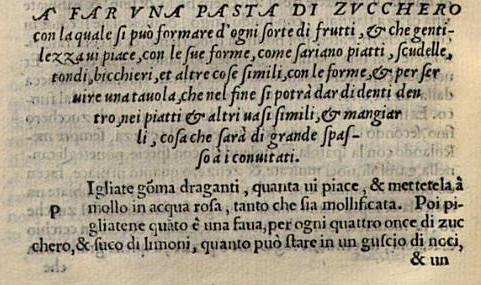

Source: Alessio Piemontese, Secreti del riverendo donno Alessio Piemontese (Venetia: Girolamo Ruscelli, 1555), 126-7.
Benvenuto Cellini - Trattato dell'oreficeria
Various portions of Cellini's Due Trattati could have some value to bread molding, but the most relevant is his chapter on stamping molds for coins. Several tools are needed for this process. The two primary tools are the "pila" and the "torsello," which are made of iron and serve as the molds for the front and reverse of the coin, respectively. The other tools can be called either the "punzoni" or the "madri," both of which contain the designs for the coin and are hammered into the pila and torsello. Especially noteworthy is Cellini's advice not to work the pila and torsello directly: "Tutti i più valenti maestri di quest'arte, e che meglio di monete lavorano, ebbero in costume di fare i loro lavori per via delle dette madri o punzioni; laonde così governandosi l'artefice, potrà esser sicuro di non aver a toccar mai niente con ciappole o bulini."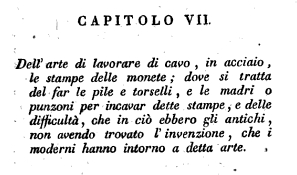
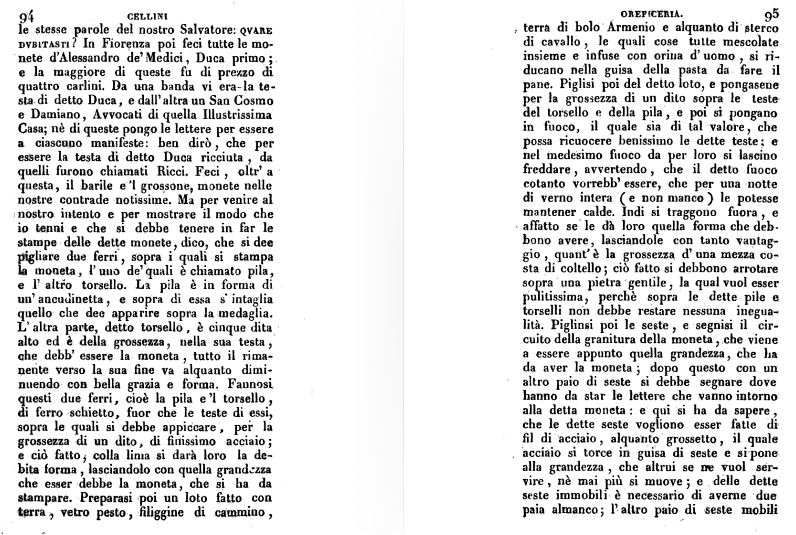
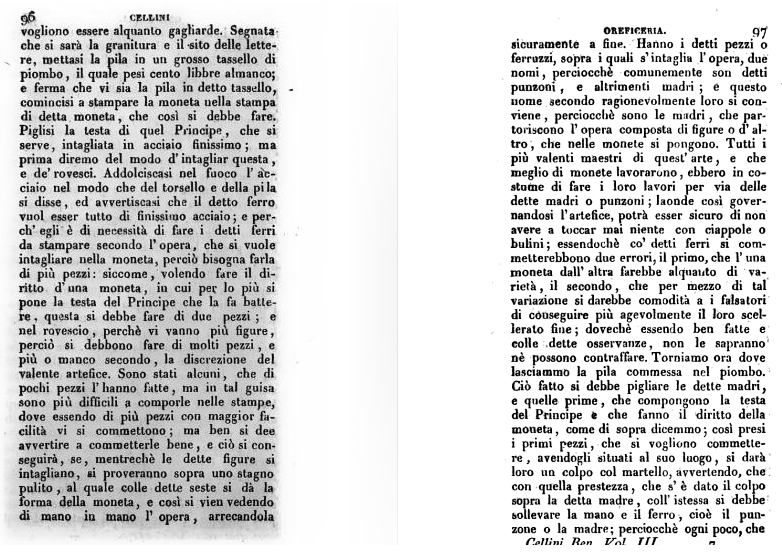

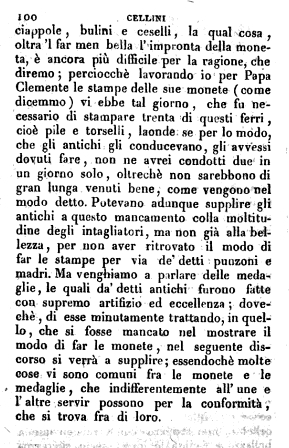
Source: Benvenuto Cellini, Due trattati di Benvenuto Cellini, scultore Fiorentino, uno dell'oreficeria l'àltro della scultura coll'aggiunta di alcune operette del medesimo (Milano: Società Tipografica de' Classici Italiani contrada del Cappuccio, 1811), 92-100.
For the English Translation, see "Chapter XIV. How to Make Steel Dies for Stamping Coins" in Benvenuto Cellini, The Treatises of Benvenuto Cellini on Goldsmithing and Sculpture, trans. C. R. Ashbee (New York: Dover Publications, 1967).